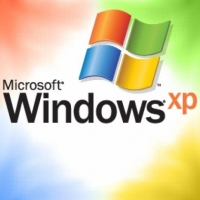What Has Changed Since Support for Windows XP Was Retired?

April 8, 2014, marked the end of Mirosoft's official support for its most successful operating system, Windows XP. At its peak, more than 80 percent of desktop operating system users were using XP, and its number right now—even after its retirement—is still a sizeable 25 percent.
What is it about this operating system that keeps such a sizeable number of people from moving away from it, despite knowing that security risks are high now that official support has ended? One reason for sure is the ease of use of the operating system—its extreme eye for user experience, which is where the name XP came from. The system is still heavily used by several enterprises such as schools and other institutions because it would require a huge transition from several angles.
The last month has seen just a marginal drop in XP adoption, by about 1 percent. Experts believe it would take at least two more years for the operating system to fully cease to exist in the marketplace.
Several posts have been published about why continuing to use XP after the end of Microsoft’s support is going to be risky from a security angle, and experts have offered suggestions on how to safely run XP if you are still running it. These include not using Internet from an XP machine—one solution is to dual boot Linux to use that operating system for Internet access and just use XP for core non-Internet functional needs in the enterprise.
What does this usage pattern mean for software developers and testers? Operating system browser testing, or OSB testing, is a major activity in a tester’s compatibility test efforts. With the advent of mobile computing, the overall compatibility effort has further gone up. A tester is thus forced to build an optimal OSB testing matrix based on the end user’s usage patterns.
Now that XP’s support is officially over, the matrix could safely drop XP. But since 25 percent of the desktop user base still runs it, a very minimal backward compatibility effort may be a smart move, especially if the product’s users have traditionally been XP loyals.
As for developers, the question is about any patches or fixes Microsoft develops and whether that should accommodate XP. The intriguing part here is that in the past week Microsoft released a security patch for zero-day vulnerability and included XP in the release. This move is definitely being questioned, as this in some sense reassures XP support even after the official gates have been closed.
In my opinion, it is time to put a hard stop to any XP support to encourage existing users to move on to supported versions.

